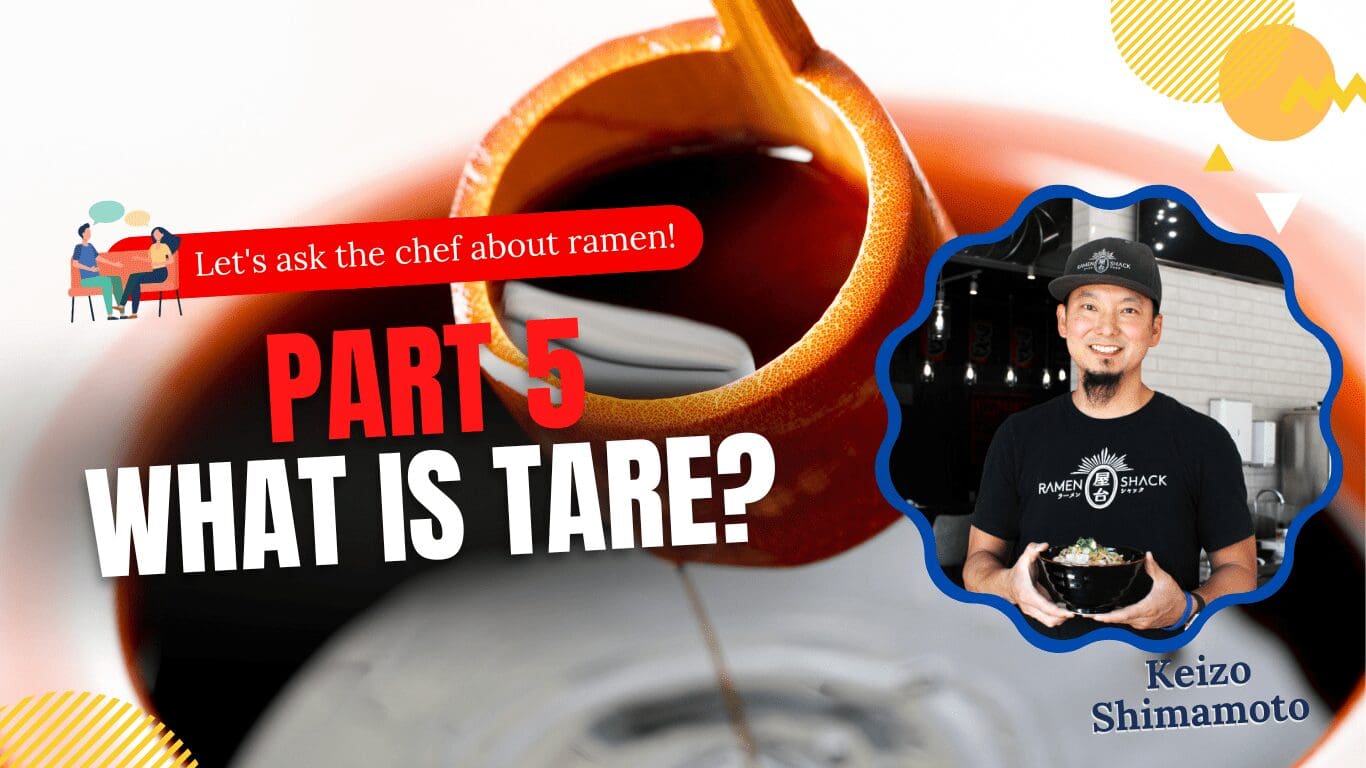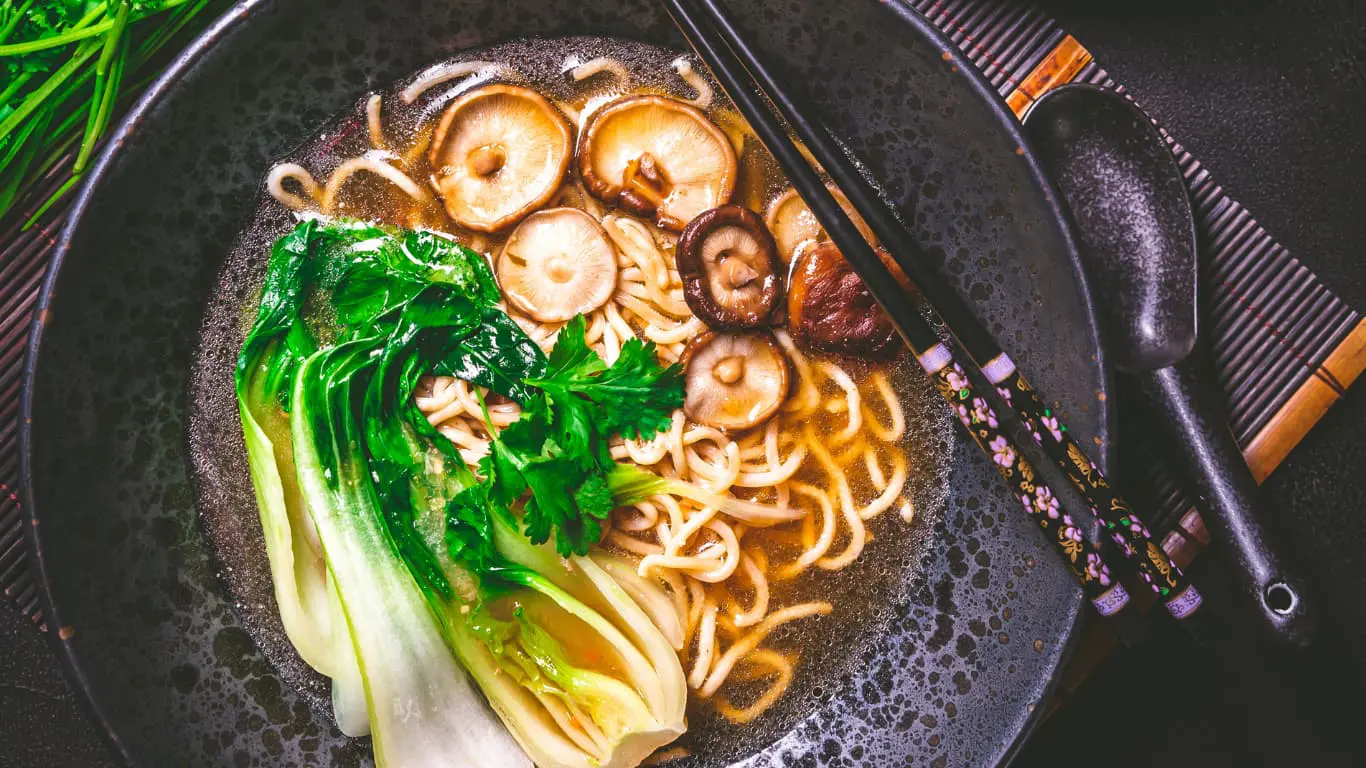Let’s Ask the Chef About Ramen! Part 3 : What is Kansui, the special ingredient that determines the noodle’s firmness? Vol.2
Published: Feb 10, 2023/ Last Updated:Feb 22, 2023
- 2 min read
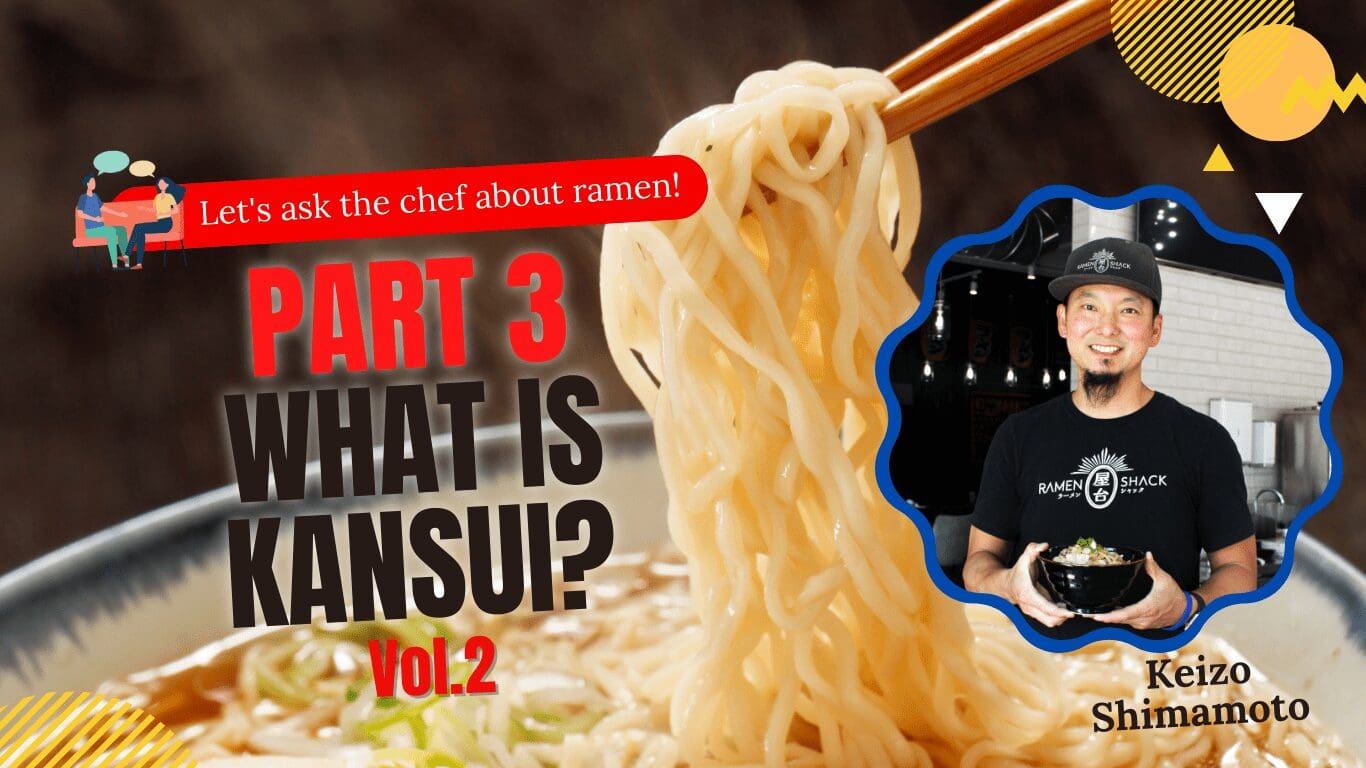
This staff blog is part 3 of the Ask The Chef series, which we will be continue to focus on kansui, the special ingredient that is essential for making ramen noodles. On the previous blog, we covered how kansui affects the noodles’ firmness. Today, let’s dig deeper and learn about the types of kansui and how they are made!
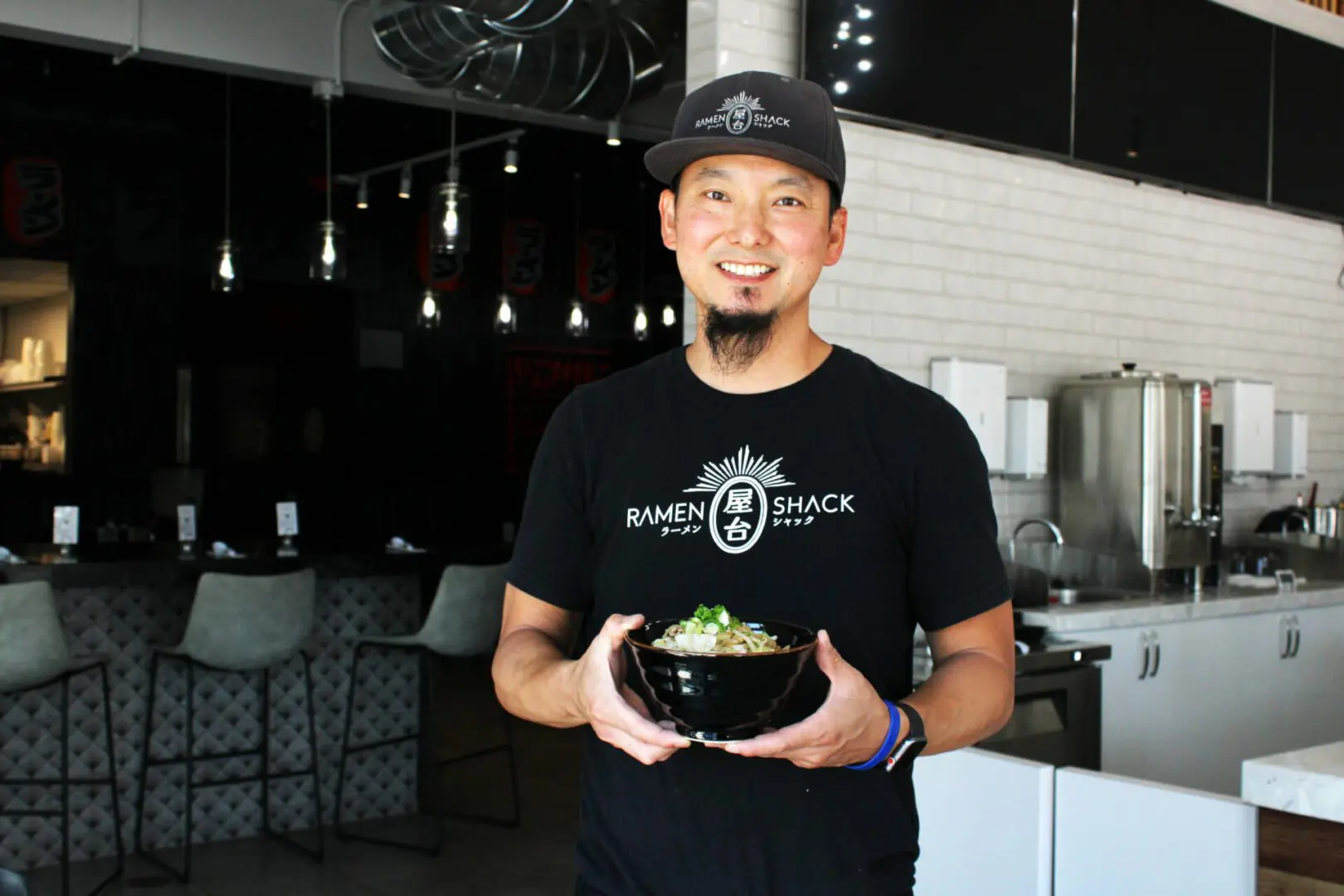
Keizo Shimamoto
Inventor of Ramen Burger and founder of Ramen Shack. Influenced by a burger using chashu he encountered while training in Japan, he invented the Ramen Burger in the United States, which was a huge success. He knows ramen thoroughly and is passionate about making ramen. A self-admitted and renowned ramen freak.
- Index
- In a professional application
- The ingredients and the types of kansui
- Mongolian King Kansui
- Other ingredients of kansui
In a professional application

There are two forms of kansui: powdered kansui and liquid kansui. In a professional application, kansui is mainly used in powder form and often manufactured by a kansui specialist. Meaning, rarely do noodle manufacturers blend their own “raw ingredients” of potassium carbonate and sodium carbonate. This is due to the refinement of ingredients that make up kansui and to ensure that it is safe for human consumption.
The ingredients and the types of kansui
Let’s take a closer look at the ingredients that make kansui and the types of kansui that is used to make noodles. The main ingredients of kansui are Potassium Carbonate and Sodium Carbonate. The most common type of kansui is called AKA (red) Kansui and it is composed of 60% Potassium Carbonate and 40% Sodium Carbonate. This is regarded as the typical ratio for a ramen noodle and probably the most common.
Mongolian King Kansui
Mongolian King Kansui (蒙古王かんすい) is another common type of kansui that we’ve seen shops use. It is 100% sodium carbonate and is believed to be the same kansui that was discovered in a Mongolian lake that became known for ramen noodles. It became famous after discovering that by kneading wheat flour with Mongolian lake’s spring water, the doughs are firm. Noodles that are made with Mongolian King Kansui are becoming popular as they have beautiful gloss, smooth texture, elegant flavor, and the soup does not get cloudy.
With these two types of kansui you can craft a blend that is suited for your needs. Generally, the more potassium carbonate you use will lead to a harder noodle and the more sodium carbonate will lead to a softer noodle. It’s good to keep these in mind when developing your own recipe.
Other ingredients of kansui
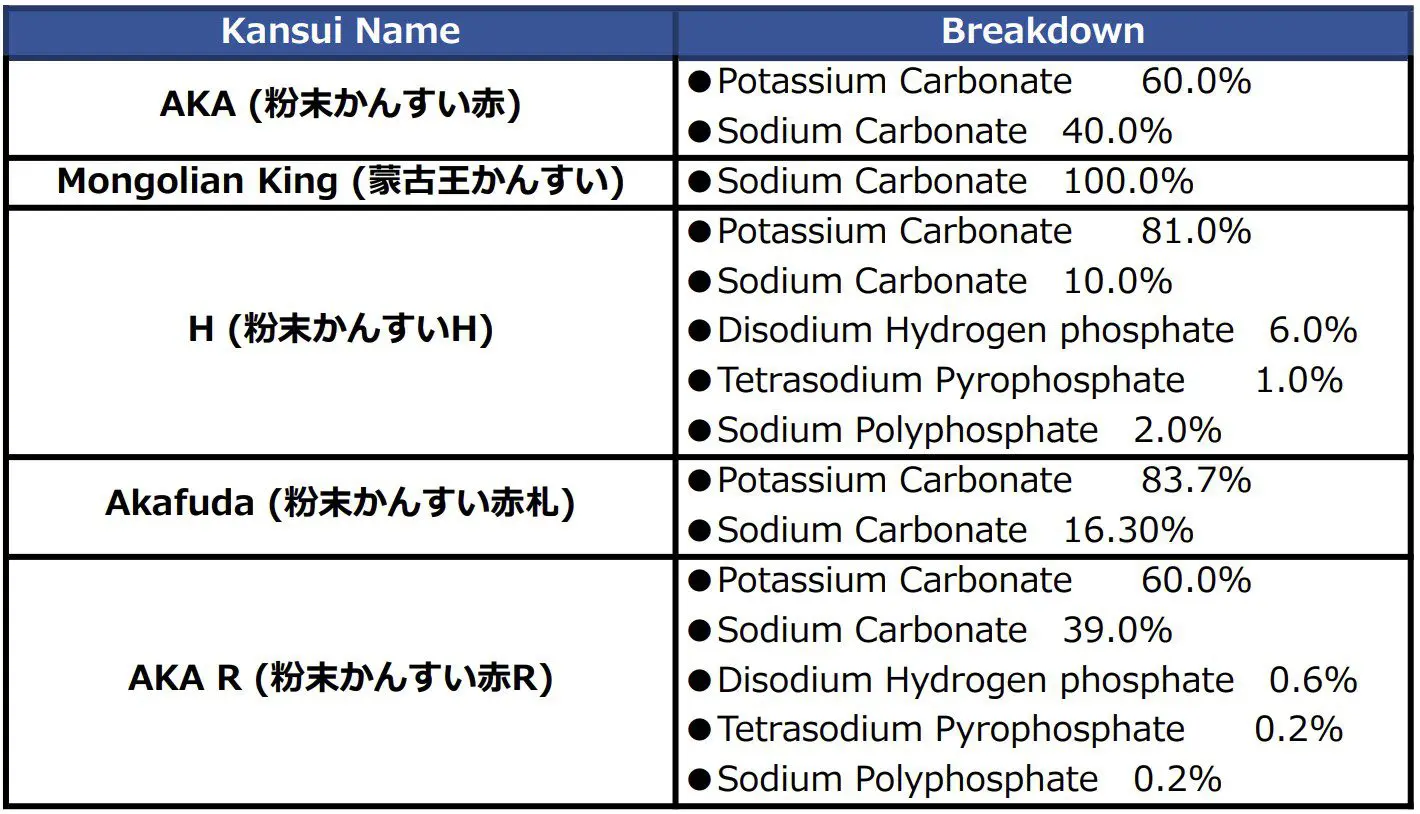
Other ingredients of kansui may include:
●Disodium Hydrogen phosphate
●Tetrasodium Pyrophosphate
●Sodium Polyphosphate
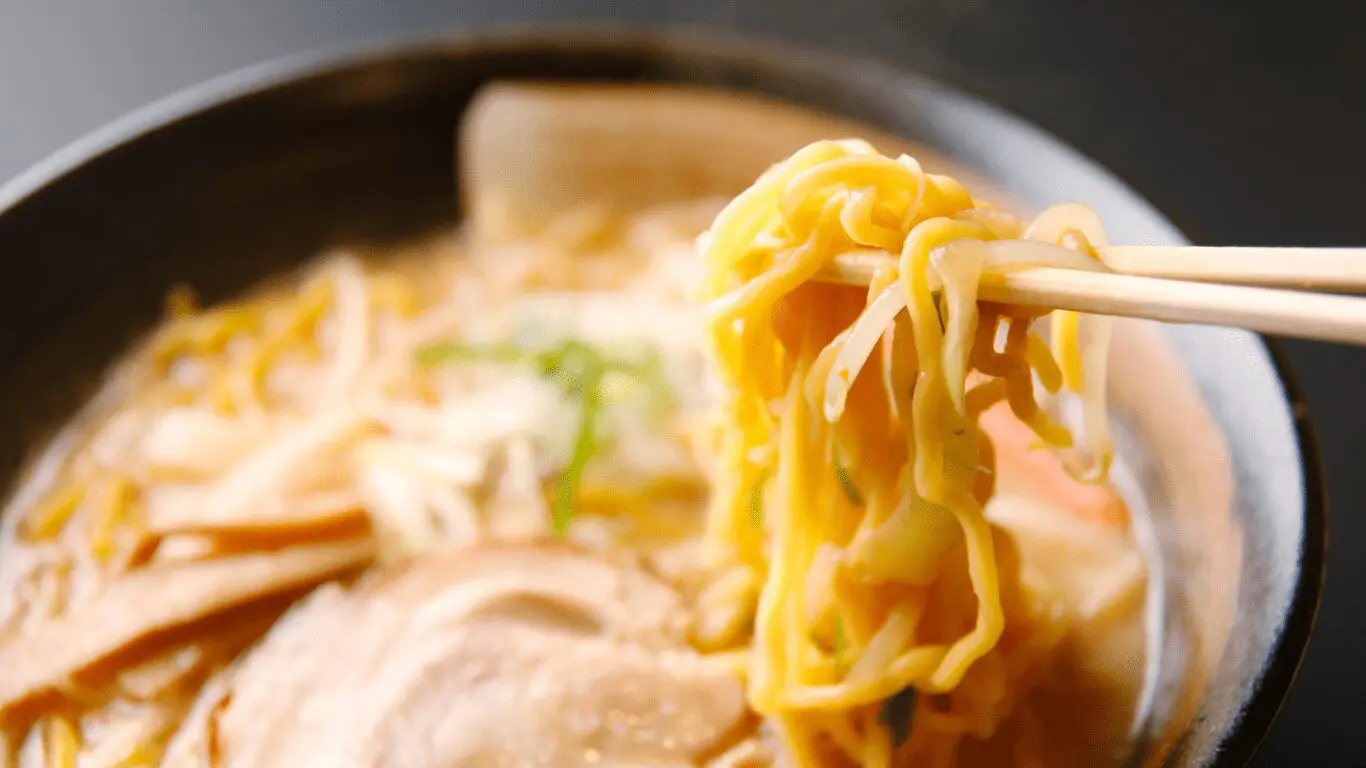
While most people will say to keep it simple, Kansui technology has evolved along with noodles over the years and will continue to change the way noodles are made for generations to come. Here is a list of the different types of kansui you may find. From part 1 to part 3, we have covered how ramen noodles are made over 3 chapters. We hope that the next time you eat ramen, you will be able to feel the ramen chef’s commitment in their creation!
Myojo × Keizo Shimamoto
